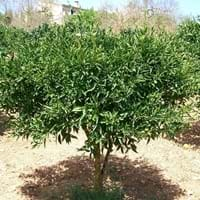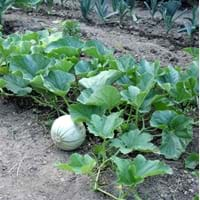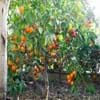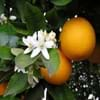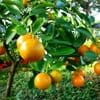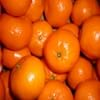What is
Life Span
Perennial
Annual
Type
Fruit
Fruit
Origin
Southern Asia, India, Melanesia, Australia
Hybrid origin, Africa
Types
etrog
Not Available
Habitat
Mediterranean region, Subtropical climates, Tropical regions
along watercourse, Banks, Barren waste areas
USDA Hardiness Zone
9-11
Not Available
AHS Heat Zone
12-9
12-4
Sunset Zone
H1, H2, 8, 9, 12, 13, 14, 15, 16, 17, 18, 19, 20, 21, 22, 23, 24
2a, 2b, 3a, 3b, 4, 5, 6, 7, 8, 9, 10, 11, 12, 13, 14, 15, 16, 17, 18, 19, 20, 21, 22, 23, 24
Habit
Oval or Rounded
Prostrate/Trailing
Information
Plant Size
Minimum Height
240.00 cm
99+
30.50 cm
99+
Minimum Width
180.00 cm
99+
120.00 cm
99+
Plant Color
Flower Color
White, Purple
Yellow
Flower Color Modifier
Bicolor
Bicolor
Fruit Color
Yellow
Green, Yellow green
Leaf Color in Spring
Green, Dark Green
Green
Leaf Color in Summer
Green, Dark Green
Green
Leaf Color in Fall
Green, Dark Green
Green, Yellow green
Leaf Color in Winter
Light Green
Light Green
Shape
Leaf Shape
Ovate elongated
Heart-shaped
Thorns
Yes
No
Season
Plant Season
Spring, Summer, Fall, Winter
Summer, Fall
Growing Conditions
Sunlight
Full Sun, Partial Sun
Full Sun
Growth Rate
Medium
Very Fast
Type of Soil
Clay, Loam, Sand
Loam
The pH of Soil
Acidic, Neutral
Neutral
Soil Drainage
Well drained
Well drained
Bloom Time
Early Spring, Spring, Winter, Late Winter, Indeterminate
Early Summer, Summer, Indeterminate
Repeat Bloomer
Yes
Yes
Tolerances
Drought
Drought
Care
Where to Plant?
Ground
Ground
How to Plant?
Seedlings, Transplanting
Seedlings
Plant Maintenance
Medium
Medium
Watering Plants
Watering Requirements
Needs less watering
Reduce watering once fruit are growing, Water in the early morning hours
In Summer
Lots of watering
Lots of watering
In Spring
Moderate
Moderate
In Winter
Average Water
Average Water
Soil
Soil pH
Acidic, Neutral
Neutral
Soil Type
Clay, Loam, Sand
Loam
Soil Drainage Capacity
Well drained
Well drained
Sun Exposure
Full Sun, Partial Sun
Full Sun
Pruning
Remove damaged leaves, Remove dead branches, Remove dead leaves
Remove damaged leaves, Remove dead branches, Remove dead leaves
Fertilizers
All-Purpose Liquid Fertilizer
All-Purpose Liquid Fertilizer
Pests and Diseases
Aphids, Citrus foot rot, Leafminers, Red blotch
Aphids, Cucumber beetles, Fusarium wilt
Plant Tolerance
Drought
Drought
Facts
Flowers
Showy
Showy
Flower Petal Number
Single
Single
Fruits
Showy Fruit
Yes
Yes
Edible Fruit
Yes
Yes
Fragrance
Fragrant Flower
Yes
Yes
Fragrant Fruit
Yes
Yes
Fragrant Leaf
Yes
No
Fragrant Bark/Stem
Yes
No
Showy Foliage
No
No
Showy Bark
No
No
Foliage Texture
Medium
Coarse
Foliage Sheen
Glossy
Matte
Evergreen
No
No
Invasive
No
No
Self-Sowing
Yes
No
Attracts
Birds, Butterflies
Ants
Allergy
Mild Allergen
Dizziness, Mouth itching, Nausea
Benefits
Uses
Aesthetic Uses
Showy Purposes
Not Used For Aesthetic Purpose
Beauty Benefits
Brightens the skin complexion, Good for skin and hair
Good for skin, Hair Conditioner, Stops hair loss
Edible Uses
Yes
Yes
Environmental Uses
Air purification
Air purification
Plant Benefits
Medicinal Uses
Antibiotic, Antidote, Pulmonary afflictions, Recovering internal injuries
Antitussive, Digestive, Diuretic, Emetic, Febrifuge, Stomachic
Part of Plant Used
Fruits, Leaves
Fruits, Seeds
Other Uses
Used as a nutritious food item, Used As Food, Used for its medicinal properties
For making oil for cosmetics
Used As Indoor Plant
No
No
Used As Outdoor Plant
Yes
Yes
Garden Design
Container, Edible, Feature Plant, Fruit / Fruit Tree, Hedges, Houseplant, Shade Trees, Topiary / Bonsai / Espalier, Tropical
Edible, Fruit / Fruit Tree, Herb / Vegetable, Vine
Scientific Name
Botanical Name
CITRUS medica
CUCUMIS melo 'Burpees Early Hybrid'
Common Name
Citron
Crenshaw Melon
In Hindi
नीबू
खरबूजा
In German
Zitrone
Zuckermelone
In French
Citron
Melon
In Spanish
Cidra
Crenshaw Melon
In Greek
Κίτρο
Crenshaw Melon
In Portuguese
cidra
Crenshaw Melon
In Polish
Cytryna
Crenshaw Melon
In Latin
Chron
Crenshaw Melon
Classification
Kingdom
Plantae
Plantae
Phylum
Magnoliophyta
Magnoliophyta
Class
Magnoliopsida
Magnoliopsida
Order
Sapindales
Cucurbitales
Family
Rutaceae
Cucurbitaceae
Genus
Citrus
Cucumis
Clade
Angiosperms, Eudicots, Rosids
Angiosperms, Eudicots, Rosids
Tribe
Citreae
Not Available
Subfamily
Aurantioideae
Not Available
Number of Species
Not Available
Not Available
|
||
|
||
|
